Nike's 3D Printed Shoe Technology: Innovations and Impacts
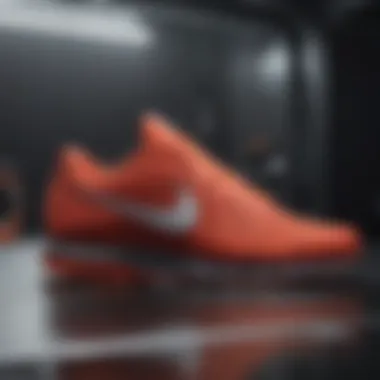
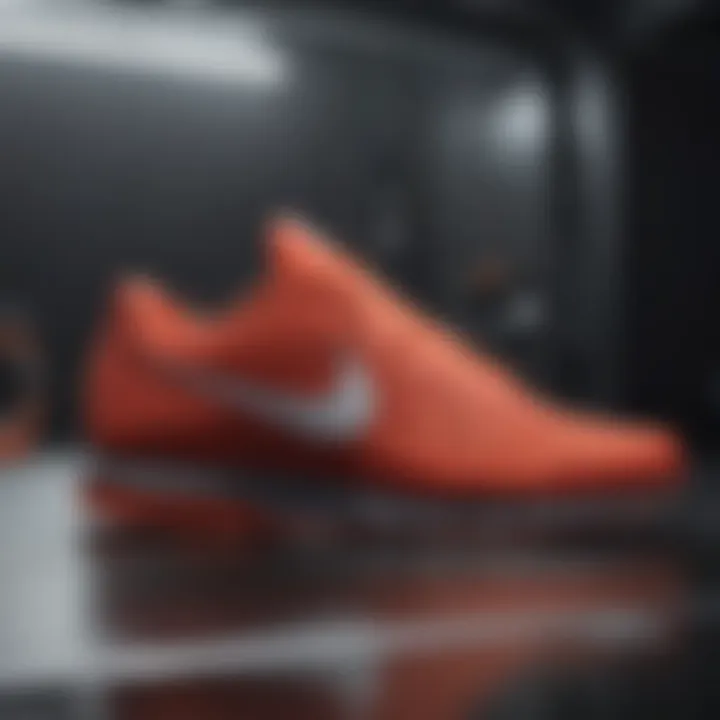
Intro
Nike has pioneered numerous innovations in the athletic footwear space. Among these, their work with 3D printed shoe technology stands out. This method represents a significant evolution in shoe production, altering how design and manufacturing processes are approached. The implications of this technology extend far beyond mere aesthetics; they touch on manufacturing efficiency, sustainability, and consumer experience. Nike’s exploration of 3D printing introduces both opportunities and challenges, shaping the future of footwear in profound ways.
In this article, we will assess the current trends and advancements in 3D printed footwear, focusing on Nike's strategic positioning in a competitive marketplace. The discussion will underscore the importance of these advancements on design integrity, efficiency, and consumer choice. Additionally, we will evaluate the potential environmental impact of this technology, aiming to provide a holistic overview for industry analysts and investors.
Predictions regarding the market outlook will be considered, taking into account economic indicators and consumer sentiment. By dissecting the nuances of this topic, we can equip stakeholders and investors with insights on the future trajectory of Nike’s 3D printed shoes and their broader implications in retail and manufacturing sectors.
Market Overview
Current Market Sentiment
As companies increasingly adopt innovative technologies, consumer interest in products emerging from advanced manufacturing processes continues to grow. Nike's initiatives in 3D printing have made waves not just for their unique designs but also for potential customization options that appeal to consumers’ desires for individuality. Presently, the market sentiment is cautiously optimistic, as investors and analysts recognize the potential long-term gains from these technology investments while remaining vigilant about production scalability and adoption rates.
Major Indices Performance
The performance of major stock indices relevant to the footwear and apparel industry can provide insight into how Nike's innovations could influence its stock. Companies that invest in cutting-edge technologies remain a focal point in the market. As the S&P 500 and NASDAQ index fluctuate based on broader economic conditions, Nike's stock movements often reflect shifts in market confidence and technological advancement. Observing these trends can lead to a better understanding of investment timing in context to the innovations being made.
Economic Indicators Analysis
To gauge the effectiveness of Nike's 3D printed footwear, a close examination of economic indicators is necessary. Key factors such as unemployment rates, consumer spending, and inflation can all create ripple effects in the performance of the retail sector, including footwear. A robust economy generally correlates with greater disposable income, enabling consumers to invest in premium products like 3D printed shoes. Conversely, economic downturns can lead to reduced consumer spending, challenging Nike to maintain market position.
Understanding these economic dynamics will aid stakeholders in making informed decisions regarding investments and market engagement related to Nike’s 3D printed footwear innovations.
Preamble to 3D Printed Footwear
The advent of 3D printed footwear represents a significant shift in how shoes are designed and manufactured. This technology is not just about innovation for its own sake; it has the potential to redefine the entire industry landscape. Today, companies are under increasing pressure to adapt to consumer demands for customization, sustainability, and quick response times. In this section, we will explore the significance of 3D printed footwear and its implications for the broader market.
Definition and Overview of 3D Printing Technology
3D printing, also known as additive manufacturing, refers to the process of creating three-dimensional objects from a digital file. The process involves layering materials to create the final product. In footwear, this technology allows designers to craft shoes with unparalleled precision, enabling unique designs that meet individual consumer needs. The versatility of 3D printing makes it possible to use various materials including thermoplastics and rubber, offering a range of textures, colors, and functionalities. This flexibility is crucial in today's market, where personalized products are gaining popularity.
Furthermore, 3D printing technology facilitates rapid prototyping. Designers can quickly make modifications based on feedback, significantly reducing the time from concept to market. Speed and efficiency are vital in the fast-paced world of footwear fashion, where trends can change overnight. As such, embracing 3D printing is not merely an option; it is fast becoming a necessity for brands like Nike.
The Evolution of Footwear Manufacturing
The manufacturing of footwear has evolved drastically over the decades. Traditional methods often relied on labor-intensive processes, resulting in high production costs and longer lead times. These conventional practices are being challenged by the rise of 3D printing technology. This shift came about partly due to advances in digital technologies and the growing emphasis on sustainability.
The earlier iterations of footwear were primarily focused on function and mass production. However, as consumer preferences have shifted towards individuality and eco-friendliness, brands are now investing in more innovative approaches. 3D printing enables manufacturers like Nike to produce shoes on-demand, which minimizes waste and reduces the carbon footprint associated with transportation and storage.
Moreover, the technology has sparked a new wave of creativity in design. Designers are no longer restricted by traditional manufacturing constraints. New shapes and structures that were once deemed impractical can now be realized, leading to the creation of footwear that is not only functional but also style-driven. This evolution in manufacturing underscores the importance of integrating technology into crafting the perfect shoe for every individual.
In summary, the transition to 3D printed footwear highlights a pivotal moment in fashion and technology, emphasizing the need for companies to embrace change for continued relevance in a competitive landscape.
Nike's Innovation Journey
Nike's journey in 3D printing technology marks a significant chapter in the evolution of footwear design and production. The integration of 3D printing is not merely a trend but a revolutionary approach that brings multiple advantages. First, it allows for precise customization of shoes to meet diverse consumer needs. This feature ensures a better fit, enhancing comfort and performance for athletes of all levels.
Moreover, 3D printing can lead to reduced waste during production. Traditional manufacturing methods often generate significant material waste, while 3D printing utilizes material more efficiently. This aligns with growing consumer demand for sustainable products, thus allowing Nike to position itself as a forward-thinking brand.
The Genesis of Nike's 3D Printed Shoe Project
Nike began exploring 3D printing technology as early as 2013. This was a pivotal moment for the brand, as they aimed to innovate beyond traditional methods. They recognized that technology could shift the paradigm of how footwear operates—not just in production but also in consumer engagement.
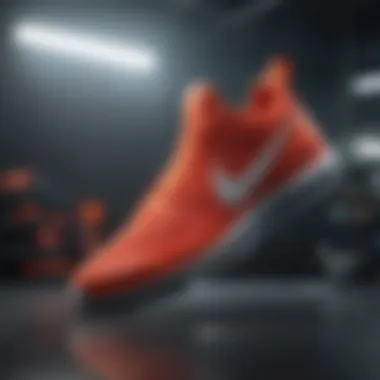
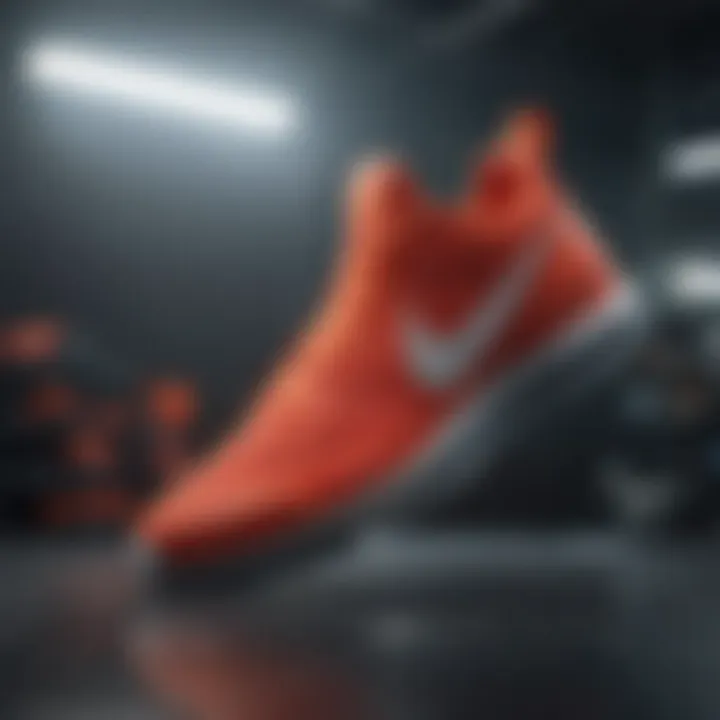
In the early phases, Nike invested heavily in research and development. Collaborations with tech companies and designers were initiated. The goal was to create prototypes that demonstrated the potential of 3D printing. Early models were showcased at various events, generating excitement among fans and industry experts alike. Nike's commitment to innovation became evident through its strategic focus on technology as a core driver of its product offerings.
Key Milestones in Development
Nike’s advancements in 3D printing technology have unfolded through several important milestones.
- First Prototypes: The first prototypes emerged, showcasing the ability to produce highly individualized footwear. Initial models were met with positive feedback for their innovative designs and comfort.
- Strong Partnerships: Forming partnerships with technology firms proved instrumental. These collaborations helped Nike refine its 3D printing techniques, resulting in better quality outputs.
- Commercial Releases: In 2019, Nike officially launched the Nike AlphaFly, designed for professional athletes, marking the first commercial application of 3D printing at a large scale. This product demonstrated the practical benefits of the technology, such as lightweight construction, superior support, and enhanced performance.
- Ongoing Innovations: To this day, Nike continues to iterate on its designs, pushing the boundaries of what's possible with 3D printed footwear. Each new release builds on previous experiences, ensuring that the technology becomes increasingly sophisticated.
"Innovation in footwear is no longer just about style; it’s about performance, sustainability, and meeting individual needs."
The combined efforts in these areas illustrate how Nike has positioned itself at the forefront of 3D printing in the footwear industry. The journey not only demonstrates Nike's adaptability but also reinforces its role as a pioneer in reimagining footwear manufacturing.
Technical Aspects of 3D Printed Shoes
Understanding the technical aspects of 3D printed shoes is critical to fully grasp the transformation occurring in the footwear industry. This segment analyzes specific materials, design flexibility, and the manufacturing processes behind Nike's groundbreaking products. Each of these elements brings unique benefits and considerations that influence both production and consumer relations.
Materials Used in 3D Printing
The choice of materials is crucial in the production of 3D printed shoes. Nike predominantly uses thermoplastic polyurethane, also known as TPU. This material is preferred because of its flexibility, durability, and lightweight nature. It allows shoes to withstand strenuous conditions while ensuring comfort for the wearer.
Other materials employed include nylon and various composites, which enable different textures and degrees of support. As technology advances, new materials like bio-based plastics are being researched. These innovations could lead to more sustainable options, aligning with growing consumer demand for environmentally friendly products.
Design Flexibility and Customization
One of the most compelling advantages of 3D printing is the design flexibility it offers. Nike's 3D printed shoes can be tailored to match individual ergonomic needs, enhancing comfort and performance. The ability to create unique designs also opens the door to customization, which is highly valued by consumers today.
For example, a runner can have shoes specifically molded to the shape of their feet, mitigating the risk of injury. This level of personalization is not only appealing but can significantly improve athletic performance. Furthermore, digital design tools allow for rapid iteration, so designs can be adjusted based on consumer feedback very quickly.
Manufacturing Process Explained
The manufacturing process of 3D printed shoes involves several stages. Initially, a digital model is created using sophisticated CAD software. This model is then sent to a 3D printer, where layers of material are deposited to build the shoe structure.
This additive manufacturing technique minimizes waste compared to traditional subtractive methods. Because it uses only the exact amount of material necessary, it is more efficient and environmentally friendly.
Once printed, the shoes undergo a finishing process that may include cleaning, assembly, and quality checks to ensure they meet Nike's high standards. Over time, the goal is to streamline this process even further, making production more cost-effective and scalable.
In summary, the technical aspects behind Nike's 3D printed shoes reveal important qualities of the footwear industry. From material choices to design capabilities and manufacturing efficiency, these elements are indispensable not only for innovation but also for maintaining a competitive edge in a rapidly evolving market.
Market Positioning of Nike
In the realm of athletic footwear, the market positioning of Nike is pivotal. It reflects not just consumer preferences but also the company's strategic initiatives in adapting to evolving trends such as 3D printing technology. By examining how Nike positions itself against competitors as well as the branding strategies employed, investors can gain valuable insights into the company's prospects.
Competitive Analysis: Nike vs.
Rivals
Nike is facing an interesting landscape when it comes to competition. The emergence of 3D printed footwear has altered traditional dynamics. Brands such as Adidas and New Balance are also exploring similar technologies. However, Nike has a distinct advantage due to its deep-rooted brand recognition and thematic focus on innovation.
- Brand Loyalty: Nike has cultivated a loyal customer base, often driven by associations with world-class athletes and impactful marketing campaigns.
- Innovation Leadership: As a pioneer in many technological advancements, Nike consistently leads in product development. The introduction of 3D printing offers a means to further solidify this leadership.
- Market Strategy: Nike’s marketing strategy effectively emphasizes personalization and performance. The potential for customized 3D printed shoes caters to the increasing consumer desire for unique products.
This combination gives Nike a competitive edge, positioning it favorably even as others attempt to catch up.
Consumer Perception and Branding Strategies
Understanding consumer perception is vital in any discussion of Nike's market positioning. The way consumers view the brand shapes their buying decisions, and Nike has utilized various branding strategies to maintain its market presence.
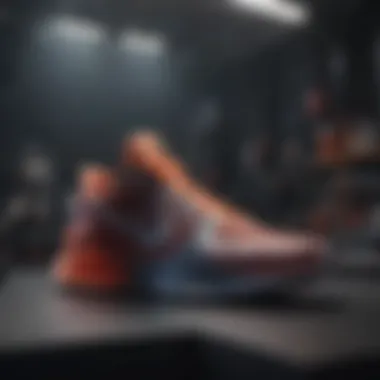
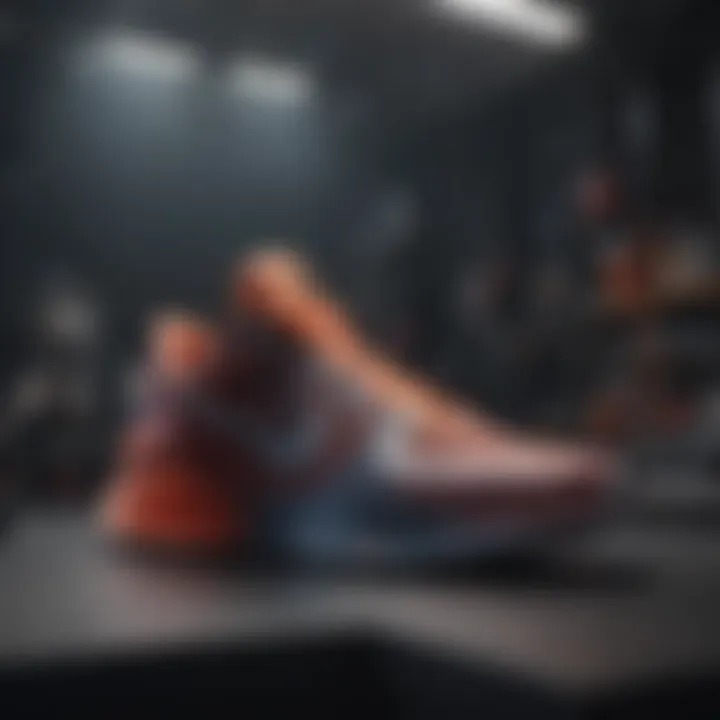
- Quality and Performance: Nike branding revolves around quality. Consumers often perceive Nike products as superior due to consistent performance in sports.
- Sustainability: As environmental consciousness rises, Nike's efforts in sustainable 3D printing appeal to eco-minded consumers. It enhances brand value while catering to the current market trend.
- Community Engagement: Nike engages with communities through marketing campaigns and social initiatives. This is crucial, as it builds a brand narrative that resonates with customers on a personal level.
“A brand is no longer what we tell the consumer, it is what consumers tell each other.”
— Scott Cook
Economic Implications of 3D Printing in Footwear
The economic implications of 3D printing in footwear present a compelling area of exploration. This technology has the potential to transform various facets of the industry, from production costs to supply chain management. A closer look reveals both promise and challenges that Nike encounters as it incorporates this technology into its business model.
Cost Analysis of Production
The cost analysis of production using 3D printing technology is an essential consideration. Traditional footwear manufacturing involves multiple steps, including design, materials sourcing, cutting, and sewing. This process not only incurs substantial labor costs but also demands significant industrial resources.
In contrast, 3D printing streamlines the manufacturing by simplifying many of these steps. Companies like Nike can potentially save on:
- Material Waste: Traditional methods often produce excess material, but 3D printing uses only the material required for the design. This reduction in waste translates directly into cost savings.
- Labor Expenses: Automated 3D printing can lessen the need for manual labor in production. This can lead to lower wages and benefits expenses.
- Inventory Costs: With on-demand production, companies do not need to maintain large inventories. They can manufacture shoes as needed, limiting tied-up capital.
However, some challenges persist. The initial investment in 3D printing equipment can be high. Additionally, companies must understand the distinct costs of specialized 3D printing materials. As Nike evaluates these facets, it becomes crucial to balance the pros and cons of 3D printing adoption.
Impact on Supply Chain Dynamics
The impact of 3D printing on supply chain dynamics can be profound. The traditional supply chain often consists of multiple layers, including manufacturing, shipment, warehousing, and retail. 3D printing enables a rethinking of this traditional framework.
One significant aspect is the decentralization of production. With 3D printing, production can happen closer to the consumer. This reduces transportation and logistics costs as shoes do not have to travel across countries for distribution. Key benefits include:
- Faster Response Times: Brands can adapt to market demand quickly. If a particular style becomes popular, production can increase without the delays of traditional manufacturing.
- Customization: The technology allows for rapid prototyping and customization. It empowers consumers to receive products tailored to their individual preferences swiftly.
- Reduction of Supply Chain Risks: By reducing reliance on global supply chains, companies can mitigate risks associated with economic fluctuations and political instability in manufacturing locations.
However, to fully harness these benefits, Nike must navigate potential risks such as the need for skilled technicians. There are also concerns about the quality control of 3D printed products, which could affect brand reputation and operational efficiency.
The implications of 3D printing in the footwear industry are not limited to production cost and supply chain dynamics; they resonate with broader economic trends and consumer expectations.
Environmental Considerations
The integration of 3D printing technology in footwear production is not merely a technical advancement; it carries significant and far-reaching environmental implications. Understanding these considerations is essential for stakeholders looking to navigate the complexities of sustainability in the retail space. Nike, as a leader in this domain, showcases how such innovations can lead to responsible manufacturing practices. The environmental footprint of traditional shoe production processes has been a growing concern, emphasizing the need for alternatives that minimize impact while delivering quality products.
Sustainability Benefits of 3D Printing
3D printing technology offers several sustainability benefits that are increasingly relevant in today's market. This process allows for the creation of shoes using additive manufacturing, which can significantly reduce material waste. Unlike traditional methods that often involve cutting away excess material, 3D printing builds shoes layer by layer, which optimizes resource usage. This technology encourages the use of eco-friendly materials, such as biodegradable substances, providing brands like Nike an opportunity to align their production with global sustainability goals.
Additionally, 3D printing supports local manufacturing, allowing companies to produce shoes closer to their market. This can reduce transportation emissions and contribute to lower carbon footprints. Customizable designs lead to fewer unsold products, reducing the need for discounts and disposal of excess inventory. The ability to create products on demand aligns with a move toward a more circular economy.
Waste Reduction in Footwear Production
Another significant aspect of 3D printing in the footwear industry is its potential for waste reduction. Traditional manufacturing processes often lead to high levels of waste, with estimates suggesting that around 60% of materials can end up as scrap during production. In contrast, 3D printing limits this scrap, promoting an efficient approach that conserves materials effectively.
Through the use of digital designs, brands can better predict consumer demand, ultimately leading to fewer overproduced items. This responsiveness helps in minimizing the environmental burden and cuts down costs associated with both production and waste management. Moreover, the ability to recycle and reuse leftover materials enables brands to create an eco-friendlier lifecycle for their products.
The effective implementation of 3D printing technology in footwear manufacturing promises a future where sustainable practices are the norm, not the exception.
In summary, the environmental considerations tied to Nike's 3D printed shoe technology underscore the significance of sustainable manufacturing practices in the modern retail landscape. By focusing on efficiency and waste reduction, companies can not only enhance their operational effectiveness but also make meaningful contributions to environmental stewardship.
Challenges Faced by Nike in 3D Printing Implementation
The integration of 3D printing technology into Nike's manufacturing processes presents several challenges. Recognition of these obstacles is critical in understanding the broader implications for both the brand and the footwear market. Navigating these challenges is vital to the success of 3D printing initiatives within Nike. The need for technological advancement and market adaptation becomes apparent as the industry evolves.
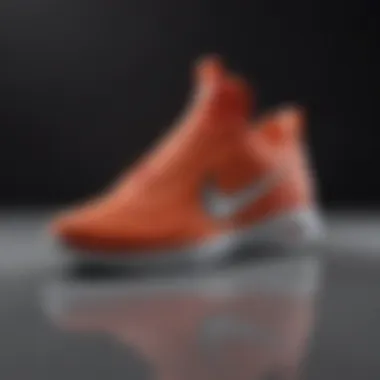
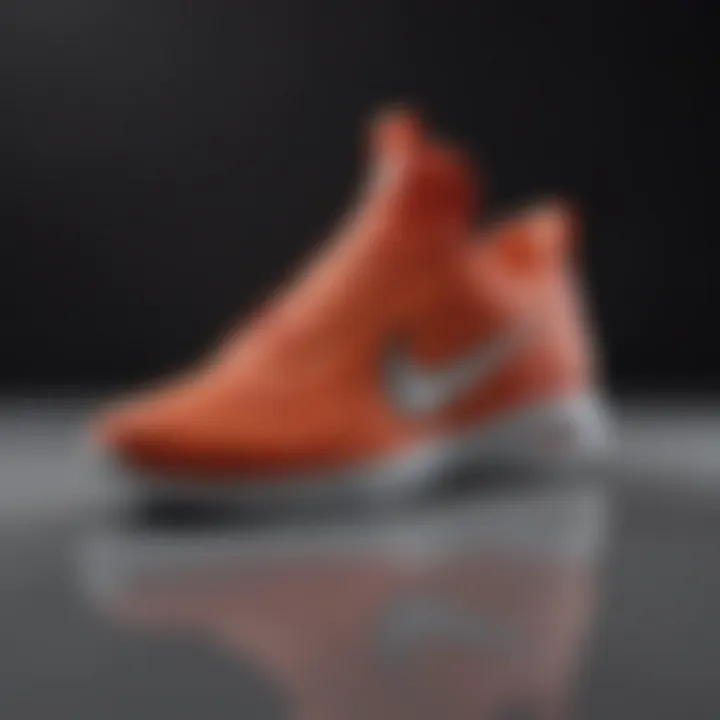
Technological Limitations
Nike faces various technological limitations in applying 3D printing at scale. One major limitation is the current state of materials used in 3D printing. While innovations have emerged, the range of materials suitable for athletic footwear is limited.
Strength, comfort, and durability are crucial attributes for any athletic shoe, which makes material selection particularly challenging. Current materials may not meet the rigorous demands of high-performance sports.
Moreover, the resolution and precision of 3D printing equipment also present limitations. Higher resolution often comes with increased costs and longer production times. Therefore, balancing quality with efficiency is an ongoing struggle for Nike in this space. While certain models may be produced successfully, scaling these operations across different shoe lines remains problematic.
Additionally, the speed of production can be a concern. Traditional manufacturing processes are often faster for larger production runs, leading to potential inefficiencies in Nike’s supply chain.
Market Adaptation Challenges
The market for athletic shoes is constantly evolving. This presents unique challenges for Nike as it implements 3D printing technology. Consumer awareness and acceptance are critical factors. While some consumers may appreciate the innovative aspects of 3D-printed footwear, others may remain skeptical about performance and longevity.
Building trust in a new production method is not a simple task. It requires effective branding and education. Engaging potential customers is essential to alleviate concerns over this relatively new technology.
Moreover, competition with established manufacturing methods also poses a challenge. Many brands have established supply chains that are optimized for traditional production. Nike must effectively communicate the benefits of 3D printing, such as customization and sustainability, to persuade consumers and retailers to embrace this change.
In summary, while Nike is at the forefront of 3D printing technology in footwear, it faces significant hurdles. Addressing technological limitations and market adaptation challenges is essential for the brand to capture the full potential of this innovative approach.
Future of 3D Printed Footwear
The future of 3D printed footwear represents a critical juncture in the evolution of the footwear industry. As we explore this topic, it becomes evident that the advancements in 3D printing technology do not only enhance production methods but also redefine consumer experiences and environmental practices.
Trends in Footwear Technology
One prominent trend is the personalization of shoes. Consumers are increasingly seeking products that reflect their individual tastes and preferences. Nike’s 3D printed shoes offer customization options that allow customers to tailor fit, design, and materials they wish to incorporate into their footwear. This shift towards tailored experiences aligns with the growing expectation for brands to provide products that cater to individual needs.
Additionally, rapid prototyping is another trend changing the landscape. Traditionally, prototyping involves lengthy processes. With 3D printing, designers can create functional models in a fraction of the time. This results in shorter development cycles, leading to faster time-to-market for new styles. Moreover, advancements in bioprinting and smart materials are set to influence footwear performance. These technologies enhance traction, flexibility, and overall comfort, which could lead to significant improvements in athletic performance.
Potential for Market Expansion
The potential for market expansion in the realm of 3D printed footwear is significant. As manufacturing processes become more efficient, costs are likely to decrease. This could open avenues for new markets and demographics who previously could not afford high-quality athletic footwear.
In emerging markets, 3D printing can cater to local tastes and requirements, facilitating localized production. This can further reduce supply chain challenges associated with traditional manufacturing practices, such as long lead times and excessive transportation costs.
Furthermore, the sustainability aspect is becoming more crucial for consumers. Brands that adopt 3D printing can reduce waste generated from the cutting and shaping of materials, thereby aligning with the increasing consumer preference for brands that are environmentally responsible.
In summary, the future of 3D printed footwear is not merely a product of technological advancements. It encompasses the interplay of consumer demand for personalization, the need for sustainability, and the economic potential of efficient manufacturing. As Nike continues to innovate, it stands to benefit from these trends and expand its market presence, positioning itself strategically in an ever-evolving landscape.
“The intersection of technology and consumer expectations shapes the future of any industry. In footwear, this could redefine both production and consumer experiences.”
Ending
The impact of 3D printed shoe technology by Nike is significant, not just for the company itself, but for the entire footwear industry. This technology opens doors to new design possibilities, faster production timelines, and an opportunity to rethink traditional supply chains and sustainability practices. The conclusions drawn from the analysis in this article highlight the dual role of innovation—both as a catalyst for transformation and a response to market demands.
Summary of Key Findings
- Technological Advancements: The integration of 3D printing techniques has improved the design and customization of shoes. Nike incorporates materials like thermoplastic polyurethane for improved performance.
- Cost-Effectiveness: While initial investments can be high, the long-term savings through reduced waste and localized production can offset these costs, making it a viable economic strategy.
- Market Response: Consumer interest in sustainable and custom products is driving this technology forward. Many buyers prefer products that minimize environmental impact.
- Competitive Positioning: Nike's early adoption puts it ahead of its rivals, but it must continuously innovate to fend off competition.
This analysis shows that Nike's 3D printed shoes do not just appeal to the fashion-forward consumer. They also attract environmentally conscious buyers who want products with lower carbon footprints. The success many brands have now including Nike shows that there is steep potential for growth in this area.
Strategic Insights for Investors
Investors should note several key points regarding Nike's advancements in 3D printing:
- Market Growth Potential: The shift to 3D printing indicates a growing market for customized and eco-friendly products. Trends suggest a continuous increase in demand, presenting ample investment opportunities.
- Brand Loyalty and Consumer Trust: Nike's established brand recognition and loyalty can serve as a significant leverage point in capturing market share as more consumers shift to 3D printed footwear.
- Financial Considerations: Initial costs related to R&D and machinery can be high. However, maturing processes around 3D printing might lead to reductions in costs, increasing profit margins.
- Sustainability as a Value Proposition: Brands that successfully integrate sustainable practices may see favorable market responses, leading to potential long-term profitability.
With the intersection of technology and consumer preference, Nike's investment in 3D printing positions itself as a leader in both the footwear market and sustainability practices.
Investors must stay informed about the evolving landscape of 3D printing technology and its implications not just for Nike but other competitors in the market. Understanding these shifts will help them capitalize on new opportunities as they arise.



